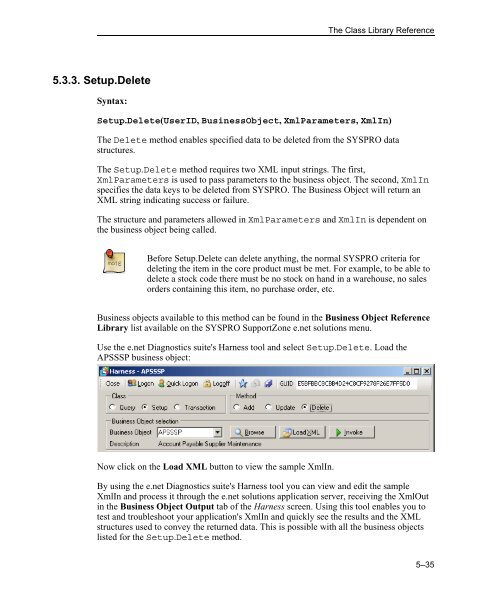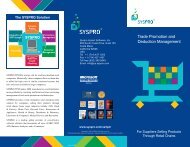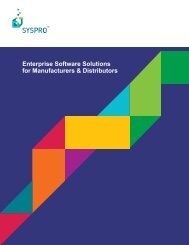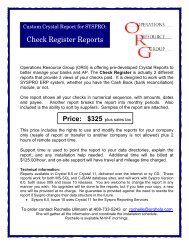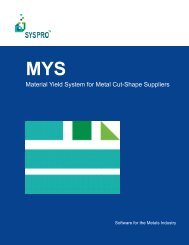Teach Yourself e.net - Syspro
Teach Yourself e.net - Syspro
Teach Yourself e.net - Syspro
You also want an ePaper? Increase the reach of your titles
YUMPU automatically turns print PDFs into web optimized ePapers that Google loves.
The Class Library Reference<br />
5.3.3. Setup.Delete<br />
Syntax:<br />
Setup.Delete(UserID, BusinessObject, XmlParameters, XmlIn)<br />
The Delete method enables specified data to be deleted from the SYSPRO data<br />
structures.<br />
The Setup.Delete method requires two XML input strings. The first,<br />
XmlParameters is used to pass parameters to the business object. The second, XmlIn<br />
specifies the data keys to be deleted from SYSPRO. The Business Object will return an<br />
XML string indicating success or failure.<br />
The structure and parameters allowed in XmlParameters and XmlIn is dependent on<br />
the business object being called.<br />
Before Setup.Delete can delete anything, the normal SYSPRO criteria for<br />
deleting the item in the core product must be met. For example, to be able to<br />
delete a stock code there must be no stock on hand in a warehouse, no sales<br />
orders containing this item, no purchase order, etc.<br />
Business objects available to this method can be found in the Business Object Reference<br />
Library list available on the SYSPRO SupportZone e.<strong>net</strong> solutions menu.<br />
Use the e.<strong>net</strong> Diagnostics suite's Harness tool and select Setup.Delete. Load the<br />
APSSSP business object:<br />
Now click on the Load XML button to view the sample XmlIn.<br />
By using the e.<strong>net</strong> Diagnostics suite's Harness tool you can view and edit the sample<br />
XmlIn and process it through the e.<strong>net</strong> solutions application server, receiving the XmlOut<br />
in the Business Object Output tab of the Harness screen. Using this tool enables you to<br />
test and troubleshoot your application's XmlIn and quickly see the results and the XML<br />
structures used to convey the returned data. This is possible with all the business objects<br />
listed for the Setup.Delete method.<br />
5–35


